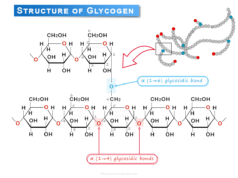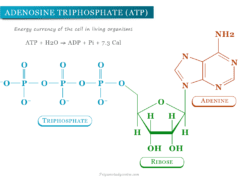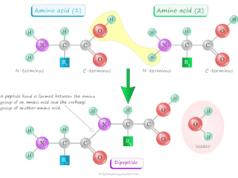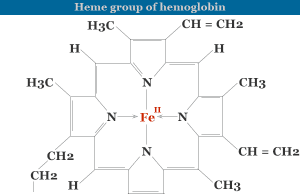What is Recombinant DNA Technology?
Recombinant DNA technology (rDNA technology) is a process that is used for producing artificial DNA through the combination of different genetic materials (DNA) from different sources. Recombinant DNA is possible because DNA molecules from all organisms have the same chemical structure but differ only in the nucleotide sequence. The idea of recombinant DNA technology emerged from the discovery of restriction enzymes by Swiss microbiologist Werner Arber. The first publications that describe the successful production of recombinant DNA appeared in 1972 and 1973 from Stanford and UCSF. In 1980 Paul Berg, an American biochemist and professor at Stanford University was awarded the Nobel Prize in Chemistry for his work on nucleic acids with particular regard to recombinant DNA.
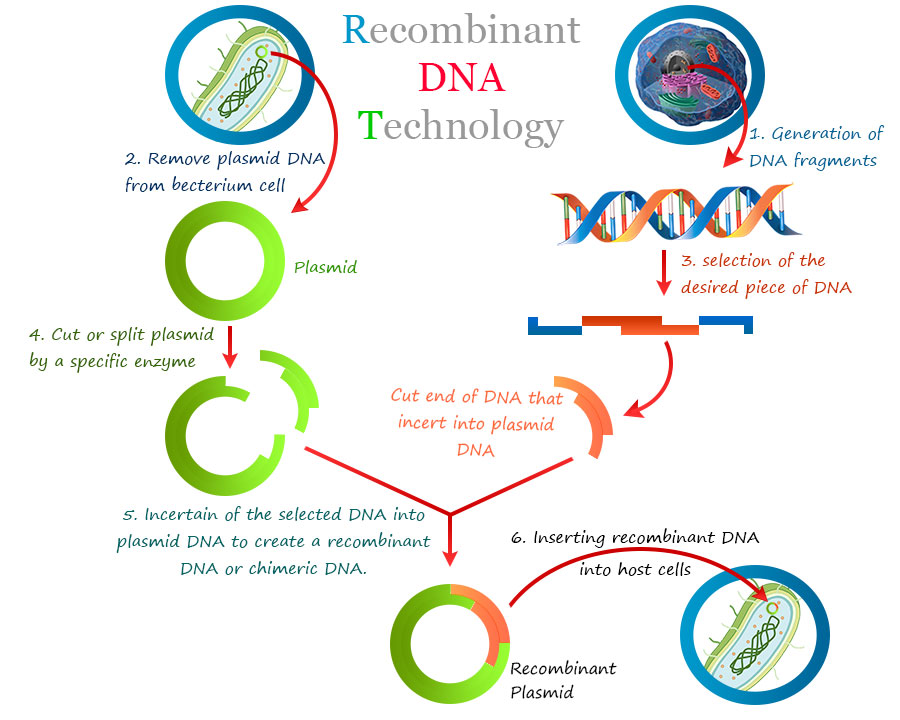
Steps in Recombinant DNA Technology
There are many diverse and complex steps involved during gene manipulation by rDNA technology.
The basic steps of rDNA technology are very simple and broadly involve the following stages,
- Generation of new DNA fragments and selection of the desired piece of DNA molecule.
- Incertain of the selected DNA into a cloning vector (plasmid) to create a recombinant DNA or chimeric DNA.
- Introduction of the recombinant vectors into host cells to get the desired product.
- Multiplication and selection of clones containing the recombinant DNA molecules.
- Expression of the gene to produce the desired product for applications.
Process of Recombinant DNA Technology
Genetic engineering, modification, or genetic manipulation is a process used mostly for altering the genetic structure of an organism by removing or introducing DNA or modifying existing genetic material.
There are multiple steps, tools, and other specific procedures used generally in recombinant DNA technology to produce artificial DNA to generate the desired product. However, enzymes are the most commonly used tools in recombinant DNA technology for the production of artificial DNA.
DNA Cutting Enzymes
DNA-cutting enzymes are the most important group of enzymes used for the manipulation of DNA. These are the bacterial enzymes that can cut or split DNA at a specific site.
They were first discovered in E. coli to restrict the replication of bacteriophages by cutting the viral DNA. Therefore, the enzymes which restrict viral replication are known as restriction enzymes or restriction endonucleases.
DNA Joining Enzymes
The cut DNA fragments are covalently joined together by DNA-joining enzyme ligases. These enzymes were isolated from viruses. They are also found in E. coli and eukaryotic cells.
DNA ligases actively participate in the cellular DNA repair process. Many other enzymes are also used in recombinant DNA technology and genetic engineering for the production of artificial DNA to generate the desired product.
Vectors in rDNA Technology
Vectors are DNA molecules that can carry a foreign DNA segment and introduce it into the host cell by recombinant protein technology or DNA cloning. They are self-replicating substances in an appropriate host cell.
The most general vectors used in DNA cloning and rDNA technology are plasmids, bacteriophages, cosmids, and artificial chromosome vectors.
Host Cells in Recombinant DNA Technology
The hosts are the living systems or cells in which the recombinant DNA molecule or vector can be propagated. There are various types of prokaryotic (bacteria) and eukaryotic (fungi, animals, and plants) cells used as a host in rDNA technology and DNA cloning.
Some examples of host cells used in genetic engineering are given below in the table,
| Group | Example | |
| Prokaryotic | Bacteria | Escherichia coli |
| Bacillus subtilis | ||
| Streptomyces sp | ||
| Eukaryotic | Fungi | Saccharomyces cerevisiae |
| Aspergillus nidulans | ||
| Animals | Insect cells | |
| Oocytes | ||
| Mammalian cells | ||
| Whole organisms | ||
| Plants | Protoplasts | |
| Intact cells | ||
| Whole plants | ||
Transgenic Animals
Transgenesis refers to the phenomenon of the introduction of exogenous DNA into the genome to create and maintain a stable habitable character. The foreign DNA molecule that is introduced into the genome is called transgene.
The animals whose genome is altered by adding one or more transgenes are said to be transgenic animals. Therefore, a transgenic animal is a genetically modified organism (GMO) with a new habitable character.
Importance of Transgenic Animals
- Today, transgenesis is an important and powerful tool for studying gene expression and development.
- The transgenic animals model in biotechnology is a good model for understanding human diseases.
- Several proteins produced by transgenic animal models are important for medical and pharmaceutical applications.
Recombinant DNA Technology Uses
The fields of applications of recombinant DNA have gradually increased since the discovery of recombinant DNA technology. Present day, recombinant DNA technology is a vast field of biotechnology that can be used widely in the following fields of science
- Medicine
- Food industry
- Agriculture
- Enviourment
Recombinant DNA Technology in Medicine
The commercial use of recombinant DNA technology began in the late 1970s by a few biological companies to produce various types of proteins. Today, there are more than 400 different proteins obtained from DNA technology. These may serve as therapeutic agents for humans and improve human health.
| Disorder | Recombinant protein/proteins |
| Anemia | Hemoglobin, erythoprotein |
| Asthma | Interleukin-I receptor |
| Delivery | Relaxin |
| Blood clots | Tissue plasminogen activator, urokinase |
| Burns | Epidermal growth factor |
| Cancer | Interferons, tumor necrosis factor, colony-stimulating factor, interleukins, lymphotoxin, macrophage-activating factor |
| Diabetes | Insulin, insulin-like growth factor |
| Female infertility | Chorionic gonadotrophin |
| Free radical damage | Superoxide dismutase |
| Growth defects | Growth hormone, growth hormone releasing factor, somatomedin-C |
| Heart attacks | Prourokinase |
| Immune disorders | Interleukins, β-cell growth factor |
| Kidney disorders | Erythropoietin |
| Nerve damage | Nerve growth factor |
| Pain | Endorphins and enkephalins |
| Ulcers | Urogastrone |
- Production of recombinant insulin: The attempt to produce insulin by recombinant technology started during the late 1970s. Today, the original technique for the synthesis of rDNA has undergone several changes to improve the yield.
- Recombinant vaccines: Recombinant DNA technology is an essential part of the production of new-generation vaccines. Generally, we can use this rDNA technology to produce insulin and hepatitis B vaccines.
- Recombinant vaccines for COVID-19: A novel coronavirus was identified in December 2019. It rapidly spread through the world and resulted in millions of deaths. With the help of rDNA technology, many pharmaceutical companies can develop the vacancies that fight agent coronavirus. Covaxin, covishield, modern, sputnik V, prize, and biotech are the most important vaccines that control this pandemic situation of human deaths.
- Hepatitis B vaccine: In 1987, the recombinant vaccine for hepatitis B became the first synthetic vaccine for public use. This type of vaccine was marketed by trade names Recombivax and Engerix-B. These are safe to use and do not produce any allergic reactions in human beings.
Recombinant DNA Technology in Food Industry
Recombinant DNA plays an important role in the production of genetically modified (GM) food by inserting, deleting, or modifying specific genes. Therefore, it is an important tool for our food industry to improve the quality, safety, and nutritional value of food.
Recombinant DNA technology is used for manufacturing various novel enzymes and food additives that are suitable for processing various food items including fruits, vegetables, cheese, meat, etc. This technology is also used for generating genetically modified foods such as golden rice, flavr savr tomato, arctic apples, etc.
- Golden Rice: Golden rice is a genetically modified rice that has been produced through genetic engineering to biosynthesize beta-carotene. Therefore, it is a good source of vitamin A and an important nutrient for vision, growth, reproduction, cellular differentiation and proliferation, and integrity of the immune system. A deficiency of this vitamin may cause various health problems in humans.
- Flavr Savr tomato: Flavr Savr tomato was the first commercially grown genetically engineered tomato that granted a license for human consumption. It remains fresh for a long time by reducing the activity of a gene that causes tomatoes to ripen and soften.
- Arctic apples: Arctic apples are genetically modified or genetically engineered apples that mostly contain a non-browning trait. It does not have discoloration for weeks. They are the first genetically engineered apples which approved for commercial sale and are helpful for human health.
Use of Recombinant DNA Technology in Agriculture
In agriculture, recombinant DNA technology can improve plant growth by increasing nitrogen fixation efficiencies. It clones nitrogen-fixing bacterial genes and inserts them into plant cells. Genetically modified (GM) crops by recombinant DNA technology have been developed to tolerate environmental stresses. For example, GM crops tolerate high salinity of soil which reduces the production of crops.
Genetic engineering can also be used to resist caterpillars, pests, and viruses by inserting resistant genes into plant genomes. Therefore, rDNA technology is useful in agriculture because it can reduce environmental damage and lower the production cost of agricultural products.
Recombinant DNA Technology in the Environment
Genetic engineering has wide applications in solving various environmental issues created by environmental pollutants.
- Phytoremediation and Plant Resistance Development Genetic engineering has been used mostly for the detection and solution of various environmental pollutants.
- The AtPHR1 transgenic plants which by enhanced Pi absorption ability may effective phytoremediation for water pollution to save aquatic life.
- Recombinant DNA technology has proven to be effective in lowering arsenic particles from soil that cause soil pollution.
- During the development of cyanobacteria by recombinant DNA technology, new opportunities are available for improving renewable energy sources. Cyanobacteria can be engineered by rDNA technology to improve the production of photosynthetic biofuel.
Cyanobacteria are advantageous hosts for industrial applications because they have simple and inexpensive nutrient requirements, mainly water, sunlight, and carbon dioxide. The commercialization of this energy source will keep the environment clean because it releases less amount of CO2 and other hazardous chemicals than fossil fuels.
Frequently Asked Questions (FAQs)
How does recombinant DNA technology work?
Recombinant DNA (rDNA) technology works by inserting genetic material from one organism into another. It is performed according to specific processes, usually involving the following steps:
- Isolating genetic material
- Cutting specific DNA fragments
- Inserting selected DNA into a cloning vector (plasmid) to
- Create a recombinant DNA or chimeric DNA
- Inserting DNA into the host cell
- Expression and screening of the gene to produce the desired product
Why recombinant DNA technology is important?
Recombinant DNA technology is an extremely important part of genetic engineering and biotechnology that allows scientists to manipulate DNA fragments.
Today, recombinant DNA technology plays an important role in improving health conditions during the development of new vaccines, hormones, and gene therapy products. These include the production of human insulin, genetically modified crops, the production of hepatitis B vaccine, the creation of transgenic animals, etc.
How does recombinant DNA help humans?
Recombinant DNA technology has been successfully applied to make various important proteins and growth hormones that are used in the treatment of various human diseases.
The most important pharmaceutical products produced by this technology are recombinant insulin, hepatitis B vaccine, and various COVID-19 vaccines for novel coronavirus.
What are transgenic animals?
In modern biotechnology, it is now possible to carry out manipulations at the genetic level to get desired characteristics in animals. Transgenic animals are animals whose genetic material has been modified by the introduction of genes from another species using recombinant DNA (rDNA) technology.

